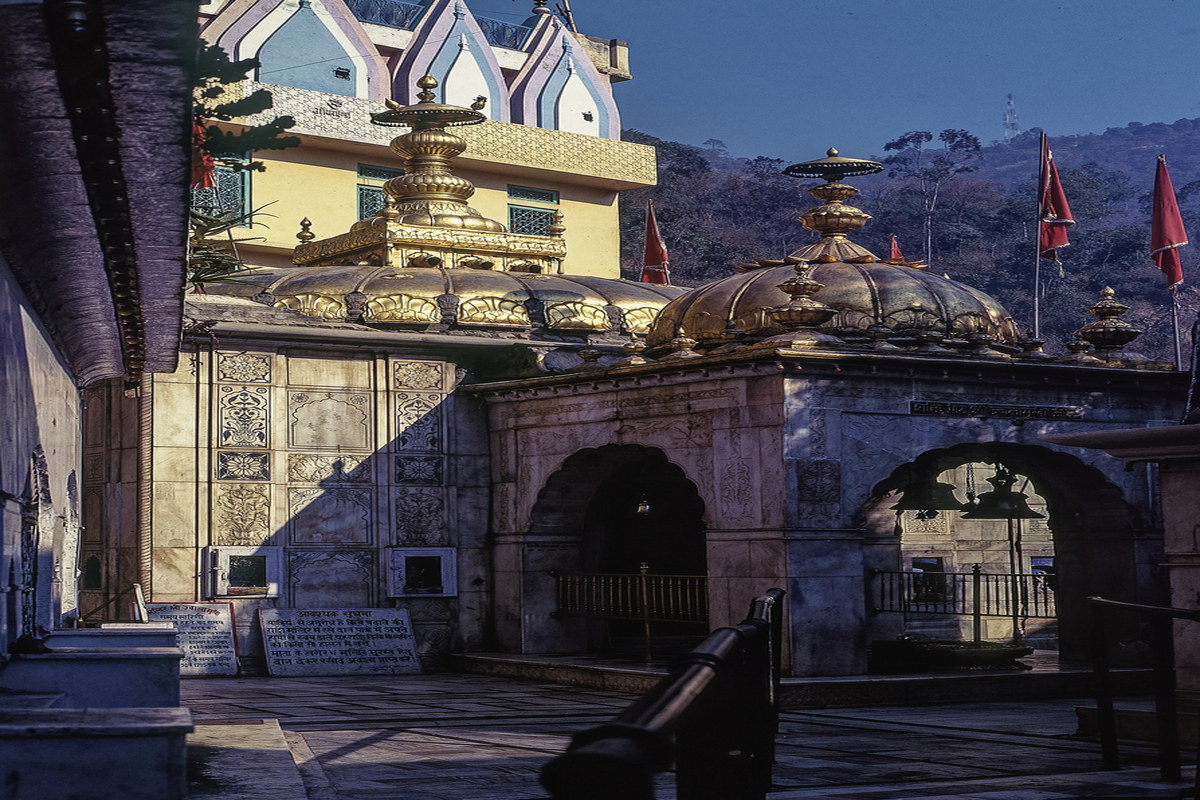The Jwalamukhi Temple in the Kangra district of Himachal Pradesh is one of the most revered places in the region. It is located around 35 kms south of the Kangra Valley in the lap of Shivalik range and is dedicated to the deity of flaming mouth. The legend of Jwalamukhi Temple relates to Saathi. It is believed that Jwalamukhi Temple is the place where the tongue of Sati fell. Here the goddess is personified as tiny flames that burn through the chasms in the age old rock.
At this place several flames continue burning day and night. According to the devotees the goddess menifests herself in a blue flame fed by natural gas that shoots out of the rock. It is recognised as one of the 51 seats of Shakthi Peeth.
Advertisement
The construction of the temple at the Jwalamukhi is credited to Raja Bhoomi Chand, a great devotee of Goddess Durga. In his dream he is said to have seen the location of the temple. It also appears that Feroz Shah Tughlaq paid a visit to the temple on his way to Kangra. He was prompted simply by natural curiosity to see the flames of Jwalamukhi. Another story associated with the temple is that Jwalamukhi Temple is that once Mughal emperor Akbar covered the flames with thick metallic plates and yet the flame reappeared through the plates. He visited the temple with his wife Jodha Bai and was impressed at the phenomenon of shooting flames.
Emperor Akbar was overwhelmed upon his visit and presented an umbrella of solid gold to the goddess.
Another legend associated with the temple is that the flame comes from the mouth of Demon Jalandhar whose large buried body extends till Multan right through under the entire doab region between the old bed of Beas and Satluj rivers and whose head lies at Kangra.
The building has a gold dome and silver plated folding doors. Inside, there is a 3 feet square pit with pathways all around. In the centre there is a hollowed rock over a primary fissure of flames. This one is regarded as the mouth of the Mahakali. Flames emit out from several other points in the pit. They are nine in total and represent the different forms of goddess Saraswathi, Annapurna Chandi, Hinglaj, Vindhyavasini, Mahalaxmi, Mahakali, Ambika, and Anjana.
There are two lines in front of the temple which represent the power of the goddess.
Many people from across the world come to visit this temple and attend the famous artis of this temple.
There are five different types of Jwala Ji Aarti which are done at the Jwala Mata temple:
Shringar Aarti- This Aarti is done early morning at Brahma muhurta time and malpua, khoya and misri are offered to Maa Jwala.
Mangal Aarti- This Aarti is done after around half an hour difference to the first one and yellow rice and curd are offered to Maa Bhagwati.
Madhyayan Kaal Aarti- This is performed in the afternoon. In this rise, Shatras Dal and sweet dessert is offered to the goddess.
Saya Kaal Aarti- This, as the name suggests, is performed in the evening. In this Aarti Puri, chana and Halwa are offered to Jagat Janni.
Shaiyya Aarti- As the name suggests it is the bedtime Aarti, before the Pandit offers the last prayers in the late evening of the day and prepares Maa’s bed to sleep. This Aarti starts around 9 PM in the evening. Milk Malai and seasonal fruits are offered to Goddess Jwala.
